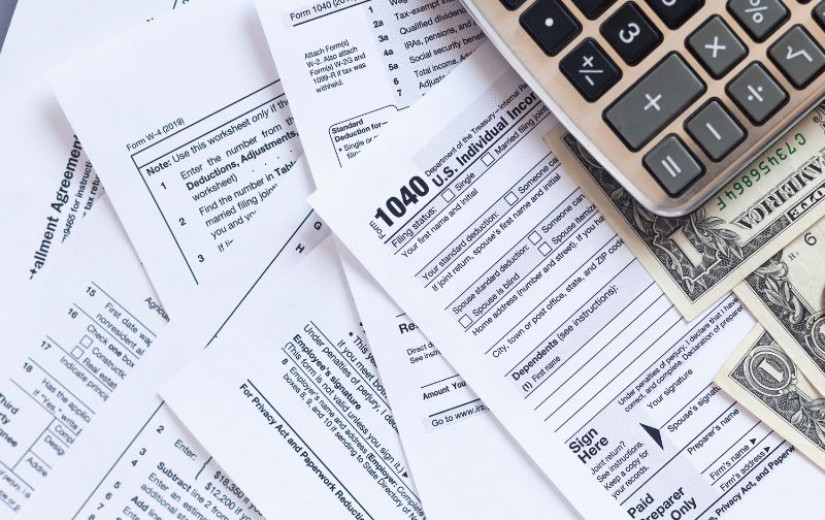Tax Deducted at Source (TDS) constitutes a fundamental mechanism within India's income tax framework, designed for the efficient collection of taxes. At its core, TDS mandates that a person, referred to as the "deductor," making certain specified payments, deducts a predetermined percentage of that payment as tax on behalf of the recipient, known as the "deductee." This deducted amount is subsequently remitted directly to the government. This system serves multiple critical objectives: it ensures a consistent and early flow of revenue to the exchequer, significantly enhances tax compliance by capturing income at its origin, and acts as a potent tool in combating tax evasion by making it difficult for income to go unreported.

Key Highlights and Changes for FY 2025-26 from Budget 2025
The Financial Year 2025-26 (Assessment Year 2026-27) is poised to introduce several pivotal changes to India's income tax landscape, primarily influenced by announcements in Budget 2025 and the proposed Income Tax Bill, 2025. These legislative efforts are broadly aimed at streamlining the tax system, enhancing administrative efficiency, and improving overall compliance for taxpayers.
Read Details of [Changes in TDS-TCS Rates in Budget-2025]
A significant proposed amendment, outlined in the Finance Bill 2025, is a reduction in the TDS rate applicable to insurance commission. This rate is slated to decrease from 5% to 2%. This specific change is designed to alleviate the tax compliance burden on insurance agents and companies, providing them with immediate cash flow benefits. This reduction is intended to be applicable irrespective of whether the taxpayer opts for the old or new tax regime.
Furthermore, Budget 2025 has introduced revised threshold limits for the applicability of TDS under various sections of the Income Tax Act, 1961. These updated thresholds, effective from April 1, 2025, are strategically designed to exempt smaller value transactions from TDS deduction, thereby reducing the compliance overhead for a larger segment of taxpayers and businesses.
The new tax regime, introduced under Section 115BAC, is set to become the default tax regime for individual taxpayers. This regime features a revised set of income tax slab rates for FY 2025-26, impacting how an individual's overall tax liability is calculated, even if the TDS rates themselves remain fixed for specific transactions.
These legislative adjustments, particularly the simplification of the Income Tax Law and the explicit inclusion of virtual digital assets (VDAs) within the definition of "undisclosed income" , represent a broader governmental strategy. The aim is to make the tax system more user-friendly and less cumbersome, which could lead to higher voluntary compliance and reduced litigation. Simultaneously, by bringing emerging economic activities like VDAs under the tax net, the government demonstrates a forward-looking approach to ensure that new forms of wealth generation contribute equitably to the tax base, proactively preventing potential avenues for tax evasion in previously unregulated sectors. This could also foreshadow future, more specific TDS provisions for VDA transactions beyond the existing Section 194S, or at least stricter enforcement.
The targeted reduction in the TDS rate on insurance commission exemplifies a policy decision aimed at providing direct financial relief or an incentive to a specific sector. Such a granular adjustment could be a response to industry representations, an effort to stimulate growth in the insurance sector by improving the cash flow for agents and companies, or a broader strategy to encourage insurance penetration among the populace by reducing the immediate tax burden on intermediaries. This highlights that while the overall tax framework is being simplified, the government retains the flexibility to introduce specific, sector-focused amendments to achieve particular economic or social objectives.
2. Detailed TDS Rate Chart for FY 2025-26
The applicability and specific rates of TDS are highly nuanced, primarily determined by two key factors: the inherent nature of the payment being made and the category of the recipient. For instance, payments such as salaries, interest income, rental income, professional fees, or winnings from lotteries each fall under distinct sections of the Income-Tax Act, 1961, and thus attract different TDS rates. Furthermore, the identity of the recipient – whether an individual, a Hindu Undivided Family (HUF), a domestic company, or a non-resident entity – can significantly influence the applicable TDS percentage. Crucially, TDS is only triggered if the transaction value exceeds a predefined "threshold limit" for that specific payment type and recipient category.
Comprehensive TDS Rate Chart for FY 2025-26 (AY 2026-27)
This table serves as a central reference for applicable TDS rates and thresholds for the Financial Year 2025-26. It consolidates information, highlighting the updated thresholds and rates effective from April 1, 2025, as mandated by the latest legislative changes. The table provides clarity on which section governs which payment, the specific monetary cutoff that triggers TDS, and the corresponding rates for different recipient types.
The consistent upward revision of threshold limits for TDS applicability (e.g., for interest under Section 194A, rent under Section 194I by individuals/HUF, payments under Section 194M, and purchase of goods under Section 194Q) indicates a policy decision to reduce the administrative and compliance burden on smaller transactions and a broader segment of taxpayers. By exempting lower-value transactions from TDS, the government aims to simplify operations for small businesses and individuals, potentially improving their immediate cash flow. This also aligns with the broader theme of "simplification" mentioned in Budget 2025 , suggesting an effort to make the tax system less intrusive for everyday transactions while focusing compliance efforts on larger revenue streams.
The prominent inclusion and specific rates for sections like 194S (Virtual Digital Assets) and 194O (E-commerce payments) with their respective thresholds in the TDS charts underscore the government's sustained focus on integrating and taxing the rapidly expanding digital economy. This proactive approach ensures that revenue generated from these modern forms of commerce is brought within the tax net. It demonstrates a commitment to preventing tax evasion in emerging sectors and ensuring equitable contribution from all economic activities, reflecting the evolving nature of taxable income in the digital age.
|
Sec
|
Nature of Payment
|
Threshold Limit (INR)
|
TDS Rates
|
Key Changes for FY 25-26
|
|
(Individuals/HUF)
|
(Others/Companies)
|
|
192
|
Salary Income
|
Basic exemption limit
|
As per slab rates
|
As per slab rates
|
Based on employee's chosen tax regime (Old/New)
|
|
192A
|
Premature withdrawal
of EPF
|
50,000
|
10%
|
10%
|
30% if PAN not provided
|
|
193
|
Interest on
securities
|
10,000
|
10%
|
10%
|
|
|
194
|
Dividend
|
10,000
|
10%
|
10%
|
|
|
194A
|
Interest (excluding
securities)
|
50,000 (banks, co-op,
post office); 10,000 (others)
|
10%
|
10%
|
INR 100,000 for senior citizens (banks, co-op, post office)
|
|
194B
|
Winnings from
lottery, puzzle, etc.
|
10,000
|
30%
|
30%
|
|
|
194BA
|
Winnings from online
games
|
No specific threshold
|
30%
|
30%
|
|
|
Sec
|
Nature of Payment
|
Threshold Limit (INR)
|
TDS Rates
|
Key Changes for FY 25-26
|
|
(Individuals/HUF)
|
(Others/Companies)
|
|
194BB
|
Winnings from horse
races
|
10,000
|
30%
|
30%
|
|
|
194C
|
Payments to
contractors/sub-contractors
|
Single: 30,000;
Aggregate: 100,000
|
1%
|
2%
|
|
|
194D
|
Insurance commission
|
20,000
|
2%
|
2%
|
Proposed change from 5% to 2%
|
|
194DA
|
Life insurance
policy payments
|
1,00,000
|
5%
|
5%
|
|
|
194EE
|
NSS deposits
|
2,500
|
10%
|
10%
|
|
|
194G
|
Commission on lottery
tickets
|
15,000
|
5%
|
5%
|
|
|
194H
|
Brokerage or
Commission
|
15,000
|
5%
|
5%
|
|
|
194I(a)
|
Rent of plant and
machinery
|
2,40,000
|
2%
|
2%
|
|
|
194I(b)
|
Rent of
land/building/furniture
|
2,40,000
|
10%
|
10%
|
|
|
194IA
|
Sale of immovable
property
|
50,00,000
|
1%
|
1%
|
Excludes agricultural land
|
|
194IB
|
Rent by
individual/HUF (non-audit)
|
240000 financial year
|
5%
|
Not Applicable
|
|
|
194IC
|
Joint Development
Agreement (monetary compensation)
|
Nil
|
10%
|
10%
|
|
|
194J(a)
|
Technical services
|
50,000
|
2%
|
2%
|
|
|
194J(b)
|
Professional
services
|
50,000
|
10%
|
10%
|
|
|
194K
|
Mutual fund units
|
10,000
|
10%
|
10%
|
|
|
194LA
|
Property acquisition
compensation
|
500000
|
10%
|
10%
|
|
|
194LB
|
Interest to
non-residents from infra debt funds
|
Not Applicable
|
5%
|
5%
|
For NRIs
|
|
194LBA
|
Income from business
trust units
|
Not Applicable
|
10%
|
10%
|
|
|
Sec
|
Nature of Payment
|
Threshold Limit (INR)
|
TDS Rates
|
Key Changes for FY 25-26
|
|
(Individuals/HUF)
|
(Others/Companies)
|
|
194LBB
|
Investment fund
income (AIFs)
|
Not Applicable
|
10%
|
10%
|
|
|
194LBC
|
Securitization trust
income
|
Not Applicable
|
25%
|
30%
|
As per Section 115TCA
|
|
194LD
|
Interest on certain
govt. securities & bonds
|
Not Applicable
|
5%
|
5%
|
|
|
194M
|
Ind/HUF (non-audit)
payments to professionals/contractors
|
50,00,000
|
5%
|
5%
|
|
|
194N
|
Cash withdrawal
|
2,000,000 (no ITR filed
for 3 yrs); 10,000,000 (ITR filed)
|
2% (for 20L-1Cr), 5% (above 1Cr)
|
2% (for 20L-1Cr), 5% (above 1Cr)
|
For banking co-op societies, post offices
|
|
194O
|
E-commerce payments
|
500,000 (Ind/HUF)
|
1%
|
1%
|
|
|
194P
|
Senior citizens
(above 75 years)
|
Basic exemption limit
|
As per slab rates
|
Not Applicable
|
|
|
194Q
|
Purchase of goods
|
50,00,000
|
0.10%
|
0.10%
|
|
|
194R
|
Business perquisites
|
20,000
|
10%
|
10%
|
|
|
194S
|
Virtual Digital
Assets (VDAs)
|
10,000 (general); 20,000 (specified)
|
1%
|
1%
|
|
|
206AA
|
Non-availability/Inoperative
PAN
|
Not Applicable
|
Higher of rate in force or 20%
|
Higher of rate in force or 20%
|
5% for 194O/194Q
|
|
206AB
|
Non-filers of ITR
|
Not Applicable
|
Higher of twice rate in force or 5%
|
Higher of twice rate in force or 5%
|
If aggregate TDS/TCS > INR 50,000
|
Note: The USD equivalents provided in some snippets are for reference only and are not included in this table to maintain focus on INR values and Indian tax regulations.
3. Surcharge and Health & Education Cess on TDS
Beyond the basic TDS rates, the total tax liability, and consequently the effective tax burden, can be influenced by the applicability of surcharge and health and education cess. These additional levies are calculated on the income tax amount, not directly on the gross income subject to TDS.
Demystifying Surcharge: Applicability and Rates Based on Income Thresholds
Surcharge is an additional tax levied on the income tax amount. Its applicability is triggered when a taxpayer's total taxable income exceeds specific thresholds. For individuals and Hindu Undivided Families (HUFs), the surcharge rates are tiered based on income slabs:
10% of income tax if total income exceeds ₹50 lakh but does not exceed ₹1 crore.
15% of income tax if total income exceeds ₹1 crore but does not exceed ₹2 crore.
25% of income tax if total income exceeds ₹2 crore but does not exceed ₹5 crore.
37% of income tax if total income exceeds ₹5 crore (this highest rate is applicable under the old tax regime).
It is important to note that under the new tax regime (Section 115BAC), the highest applicable surcharge rate is capped at 25%, even for incomes exceeding ₹5 crore.
Health and Education Cess: The 4% Levy
In addition to income tax and any applicable surcharge, a Health and Education Cess of 4% is uniformly levied.6 This cess is calculated on the total of income tax plus surcharge (if applicable). This 4% levy is universally applicable across all categories of taxpayers, irrespective of their income level or chosen tax regime (old or new).11 This consistent and universal application of the Health and Education Cess signifies that the government views this levy as a non-negotiable and stable source of funding for critical social sectors. This ensures a predictable revenue stream for health and education initiatives, insulating it from individual tax planning choices or regime preferences. It underscores the government's commitment to these social objectives, ensuring that a portion of all taxable income contributes to these specific public welfare programs.
Impact of the New Tax Regime on TDS Applicability
While the specific TDS rates for various payments (e.g., 10% for interest, 2% for contractors) are generally fixed by the respective sections of the Income Tax Act, the overall tax liability of the deductee can be significantly influenced by their chosen tax regime. The new tax regime, which is now the default option, features revised income tax slab rates for FY 2025-26. These rates begin at NIL for income up to ₹4 lakh and progressively increase, reaching 30% for income above ₹24 lakh.
A key distinction between the old and new regimes, particularly relevant for high-income earners, is the maximum surcharge rate. The new regime caps the highest surcharge at 25%, whereas the old regime can go up to 37% for very high incomes. This difference can impact the total tax liability, and consequently, the effective burden of TDS, especially for salary income (Section 192), where the employer deducts TDS based on the employee's estimated total tax liability.
This differential in surcharge rates, coupled with the new regime being the default, suggests a strategic move by the government to encourage adoption of the simplified regime, even for high-income earners. By capping the surcharge, the effective tax burden for these individuals is reduced, potentially making the new regime more attractive despite the absence of various deductions and exemptions. This could lead to simpler tax calculations for a larger segment of the population, streamlining the tax collection process and potentially reducing disputes related to complex deduction claims. For deductors, especially employers, this means they need to be aware of the employee's chosen regime or the default one when calculating TDS under Section 192, as it directly impacts the amount to be withheld.
Key Table 2: Surcharge Rates for Individuals/HUF (FY 2025-26)
Taxable Income Range | Surcharge Rate (Old Regime) | Surcharge Rate (New Regime) |
Exceeds ₹50 lakh but does not exceed ₹1 crore | 10% | 10% |
Exceeds ₹1 crore but does not exceed ₹2 crore | 15% | 15% |
Exceeds ₹2 crore but does not exceed ₹5 crore | 25% | 25% |
Exceeds ₹5 crore | 37% | 25% |
Note: Health and Education Cess of 4% is applicable on income tax plus surcharge under both regimes.
4. TDS Compliance Calendar: Due Dates for Deposit and Return Filing
Adherence to prescribed due dates for both TDS deposit and return filing is paramount for compliance and to avoid penalties.
Monthly Due Dates for Depositing TDS with the Government
The general rule for depositing TDS with the government is by the 7th day of the month following the month in which the tax was deducted. For example, TDS deducted in April 2025 must be deposited by May 7, 2025.
An important exception applies to TDS deducted in the month of March: the due date for its deposit is extended to April 30th of the following financial year. This provides businesses with additional time to reconcile their year-end TDS liabilities. For government deductors who make TDS payments via book entry (Treasury Challan), the tax must generally be deposited on the same day of deduction. However, for deductions made in March, government deductors have until April 7th to deposit the TDS.
Specific transactions, such as TDS on sale of immovable property (Section 194IA), rent paid by individuals/HUFs not subject to audit (Section 194IB), payments under Joint Development Agreements (Section 194IC), and payments for Virtual Digital Assets (Section 194S), have a different due date. For these, the deductor must furnish a challan-cum-statement (Form 26QB, 26QC, or 26QD respectively) and deposit the TDS within 30 days from the end of the month in which the tax was deducted. Notably, for these specific sections, no separate TDS return is required to be filed.
Quarterly Due Dates for Filing TDS Returns
TDS returns are comprehensive quarterly statements that deductors are mandated to submit to the Income Tax Department. These statements provide detailed information about the TDS deducted and deposited during the respective quarter. The general due date for filing these quarterly TDS returns is the last day of the month following the end of the quarter. For instance, for the quarter ending June 30, 2025, the return is due by July 31, 2025. An important exception applies to the last quarter of the financial year (January to March). The TDS return for this quarter is due by May 31st of the following financial year, providing an extended period for year-end reconciliation and filing.
This differentiated approach for specific sections (194IA, 194IB, 194IC, 194S) suggests a governmental strategy to simplify compliance for specific, often high-value, or individual-centric transactions. By replacing the quarterly return requirement with a single challan-cum-statement, the aim is to reduce the overall administrative burden on deductors, particularly individuals or smaller entities who might not have sophisticated accounting systems for regular quarterly filings. This trade-off provides a simpler form but requires awareness of a distinct, potentially less intuitive, due date compared to the general 7th-of-the-next-month rule. It indicates a move towards making tax collection more accessible and less burdensome for occasional deductors, while still ensuring tax is collected at source.
|
Key Table 3: TDS Payment and Return Filing Due Dates for FY 2025-26
|
|
Quarter
|
Period
|
Monthly TDS Deposit Due Date
|
Quarterly TDS Return Filing Due Date
|
|
1
|
Apr-25
|
May 7, 2025
|
July 31, 2025
|
|
|
May-25
|
June 7, 2025
|
|
|
|
Jun-25
|
July 7, 2025
|
|
|
2
|
Jul-25
|
August 7, 2025
|
October 31, 2025
|
|
|
Aug-25
|
September 7, 2025
|
|
|
|
Sep-25
|
October 7, 2025
|
|
|
3
|
Oct-25
|
November 7, 2025
|
January 31, 2026
|
|
|
Nov-25
|
December 7, 2025
|
|
|
|
Dec-25
|
January 7, 2026
|
|
|
4
|
Jan-26
|
February 7, 2026
|
May 31, 2026
|
|
|
Feb-26
|
March 7, 2026
|
|
|
|
Mar-26
|
April 30, 2026 (Non-Govt. Deductors) April 7, 2026 (Govt.
Deductors via book entry)
|
|
Note: For TDS under sections 194IA, 194IB, 194IC, and 194S, TDS must be deposited within 30 days from the end of the month of deduction, and no separate quarterly return is required.
5. Consequences of TDS Non-Compliance: Penalties, Interest, and Disallowances
Failure to comply with TDS provisions can lead to significant financial repercussions and legal liabilities. The Income Tax Department has a multi-layered penalty framework to ensure strict adherence.
Interest for Late Deduction (Section 201(1A))
If TDS is not deducted at the appropriate time, interest is charged at a rate of 1% per month or part of the month.14 This interest is calculated from the date the tax should have been deducted until the actual date it is deducted. The rule that a "part of the month is considered a full month" means even a single day's delay into a new month will incur a full month's interest.
Interest for Late Deposit (Section 201(1A))
Even if TDS is correctly deducted, a delay in depositing the deducted amount to the government's credit incurs a higher interest rate. Interest is levied at 1.5% per month or part of the month. This calculation commences from the date the tax was actually deducted until the date it is actually deposited with the government. Similar to late deduction, any fraction of a month is considered a full month for interest calculation. It is crucial that this interest is paid before filing the TDS return.
Late Filing Fees for TDS Returns (Section 234E)
A statutory late filing fee of ₹200 per day is imposed for any delay in filing the quarterly TDS return. This daily fee continues to accrue until the return is filed, but it is capped at the total amount of TDS that was required to be deducted for that particular quarter.
Penalties for Non-Filing or Incorrect Filing of TDS Returns (Section 271H)
Beyond the daily late filing fee, more severe penalties can be imposed under Section 271H for significant non-compliance related to TDS returns. If a TDS return is not filed within one year from its due date, or if it contains incorrect information (such as PAN, amount, or section details), a penalty ranging from ₹10,000 to ₹1,00,000 may be levied. This penalty is in addition to any interest charges and the late filing fee under Section 234E.
Disallowance of Expenditure for Non-Deduction/Non-Deposit (Section 40(a)(ia))
One of the most significant financial consequences of TDS non-compliance is the disallowance of corresponding expenditure. If TDS was required to be deducted from a payment but was either not deducted or, if deducted, not deposited to the government within the prescribed time, a portion or the entire amount of that expense will be disallowed for the purpose of computing the deductor's taxable income.
For payments made to resident payees: 30% of the expense amount on which TDS was not deducted or deposited will be disallowed. This means 30% of that expense cannot be claimed as a deduction, leading to a higher taxable profit for the deductor.
For payments made to non-resident payees: The entire 100% of the expense on which TDS was required but not deducted or deposited will be disallowed. This is a much harsher penalty, reflecting increased scrutiny on international transactions.
This multi-faceted and escalating penalty framework underscores the Income Tax Department's extremely stringent stance on TDS compliance. It is designed to be a significant deterrent, making any form of non-compliance financially prohibitive and legally perilous. Deductors must recognize that even a seemingly minor lapse can trigger a cascade of penalties, leading to substantial financial drain, increased taxable income, and severe legal repercussions. The cumulative impact of these penalties can far exceed the original TDS amount, emphasizing that proactive and meticulous compliance is not just good practice but a critical risk management imperative.
The stark differential treatment for disallowance of expenditure for non-deduction/non-deposit under Section 40(a)(ia) (30% for residents vs. 100% for non-residents) highlights the government's intensified focus and stricter enforcement mechanisms concerning payments made to non-residents.14 The 100% disallowance acts as a powerful and immediate financial disincentive for Indian entities to neglect TDS compliance on such transactions. This policy is a crucial tool to prevent potential capital flight, ensure that income accruing to non-residents from Indian sources is accurately captured and taxed at source, and reinforce India's sovereign right to tax such income. It signifies that the perceived risk of non-compliance in cross-border payments is significantly higher for the tax authorities, leading to a zero-tolerance approach for lapses.
Prosecution for Failure to Deposit TDS (Section 276B)
Beyond financial penalties, serious consequences, including criminal prosecution, can arise from a failure to deposit TDS to the government's credit within the stipulated timeframe. Under Section 276B of the Income Tax Act, such an offense can lead to rigorous imprisonment for a term ranging from 3 months to 7 years, in addition to a fine. This highlights the gravity with which the tax authorities view the non-remittance of deducted taxes, as it amounts to withholding government revenue.
6. Specific TDS Scenarios and Departmental Clarifications
The complexities of TDS often necessitate specific provisions and clarifications from the Income Tax Department to address unique scenarios and ensure equitable application of the law.
Higher TDS Rates for Non-Availability or Inoperative PAN (Section 206AA and 206AB)
Section 206AA (Non-furnishing/Invalid PAN): This crucial section mandates higher TDS deduction rates if the deductee fails to furnish their Permanent Account Number (PAN) to the deductor, or if the PAN provided is invalid or has become inoperative (e.g., due to non-linkage with Aadhaar). In such scenarios, TDS must be deducted at the higher of the following rates:
The rate specified in the relevant section of the Income Tax Act for that specific payment.
The rate or rates in force (as prescribed by the Finance Act for the relevant year).
A flat rate of 20%.5 For specific sections like 194-O (e-commerce payments) and 194Q (purchase of goods), the higher rate is 5% instead of 20% if PAN is not provided.
Section 206AB (Non-filers of ITR): Introduced to encourage income tax return filing, this section applies to "specified persons" who have not filed their income tax returns for a specified number of preceding financial years (typically two, but contextually "last year" as per snippets) and where the aggregate amount of tax deducted or collected at source during the current financial year exceeds ₹50,000. For such persons, TDS is deducted at the higher of:
Recent Circulars and Notifications Impacting TDS (e.g., Circular No. 6/2024 on Inoperative PAN)
The Income Tax Department frequently issues circulars and notifications to clarify existing provisions or address practical difficulties. A significant recent clarification is Circular No. 6/2024, dated April 23, 2024. This circular provides a partial modification to an earlier Circular No. 3 of 2023, which detailed the consequences of a Permanent Account Number (PAN) becoming inoperative (primarily due to non-linkage with Aadhaar) as per Rule 114AAA.
Specifically, Circular No. 6/2024 offers relief to deductors/collectors. For transactions entered into up to March 31, 2024, if the deductee's PAN becomes operative (as a result of linkage with Aadhaar) on or before May 31, 2024, the deductor/collector will not be held liable to deduct/collect tax at the higher rate prescribed under Section 206AA/206CC. Instead, the normal TDS/TCS rates, as mandated by other provisions of the Act, will apply. This measure aims to redress grievances where demands were raised against deductors for 'short-deduction/collection' simply because the deductee's PAN was inoperative at the time of transaction, even if it was subsequently made operative.
This demonstrates a nuanced and pragmatic approach by the Central Board of Direct Taxes (CBDT). While the law is designed to strictly enforce compliance and encourage Aadhaar-PAN linkage (hence higher TDS for inoperative











